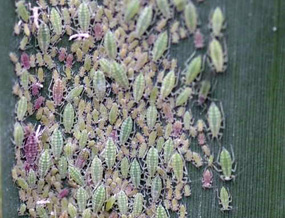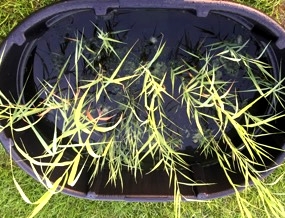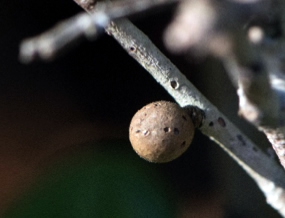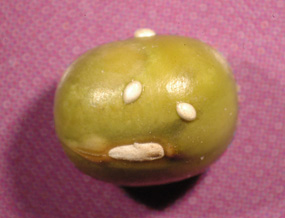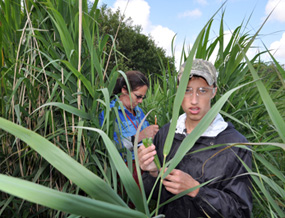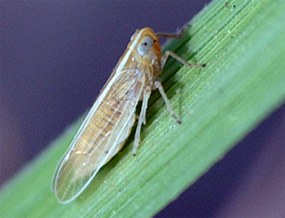Roseau cane (Phragmites australis) Dieback in the Mississippi River Delta
Widespread dieoff of Roseau cane (Phragmites australis) has been reported in Plaquemines Parish since the fall of 2016 (Knight et al. 2018; Fig. 1). Roseau cane is widely used for erosion control at the mouth of the Mississippi River because of its ability to grow at depths unsuitable for other marsh plants. Owing to its aggressive growth and extensive rhizome system, Roseau cane increases soil accumulation, provides habitat for fisheries and migratory birds, protects oil and gas pipelines, and prevents shoreline erosion from direct exposure to storm surge.
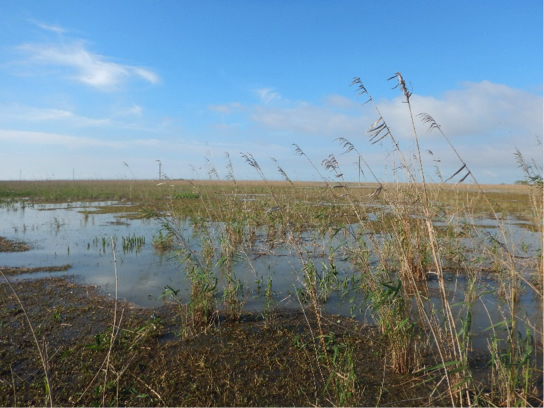
Upon close examination, state biologists found that cane dieoff was associated with the presence of a scale insect. This scale insect was recently identified by Dr. Scott Schneider (USDA-ARS) as Nipponaclerda biwakoensis (Kuwana) and is native to China and Japan Japan (Schneider et al. 2022 Biological Invasions 24: 2735-2755). It is now known as the roseau cane scale (Fig. 2). The roseau cane scale feeds on the cane sap and can be found along the stems. Interestingly, the Mississippi River Delta (MRD) is comprised of a mixture of multiple phylogeographic lineages of roseau cane including our “native” type e (Gulf lineage; P. australis berlandieri) along with nonnative lineages originating from Europe and North Africa (Lambertini et al. 2012). These nonnative varieties include Delta which dominates the MRD, the well-known European invasive lineage (Haplotype M; P. australis australis), and several other uncommon lineages.
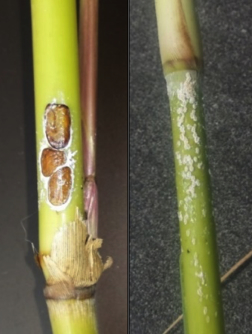
Infestations of the scale have been reported throughout the MRD including Venice, Grand Bay, Jaquines Island, Double Bayou, Pass A Loutre Wildlife Management Area, and Delta National Wildlife Refuge. Based on our surveys, scale infestations in these areas have reached more than 700 per stem causing extensive damage to the plant (Knight et al. 2020). Four parasitoids have been found attacking the scale. The parasitoids were identified by Dr. John Noyes (British Natural History Museum) as Neastymachus japonicus, Boucekiella depressa, Astymachus lasallei and Aprostocetus sp., and they are native to Asia (Japoshvili et al. 2016). While scale populations are still occurring at damaging levels, without the mortality from these parasitoids, the impact on roseau stands may be worse. If you are interested in the parasitoids of the roseau cane scale, you should check out Tanner Spark’s 2024 dissertation “Biological control of roseau cane scale with parasitoid wasps in Louisiana” (https://repository.lsu.edu/gradschool_dissertations/6645/).
A recent study by Tracy Elsey-Quirk and colleagues (Elsey-Quirk et al. 2024) calls into question whether the roseau cane scale was the causal agent for Phragmites dieback in the MRD. Using 16 years of data from the Louisiana Coastwide Reference Monitoring System (CRMS) network (https://www.lacoast.gov/crms/Home.aspx), Dr. Elsey-Quirk discovered that dieback was first evident in 2012. Marshes that experienced dieback underwent five years of increasing flooding, starting in 2007, followed by an extreme drought event in 2012. This drought resulted in salt water intruding into areas that are typically freshwater. From CRMS data, vegetative cover by Phragmites began to decline following the drought event. Although we do not have any information on the presence of scale insects prior to about 2016, it seems likely that they were less prevalent in the MRD at the time dieback was initiated. Research from my laboratory and that of Rodrigo Diaz (https://www.lsuagcenter.com/profiles/rdiaz) have shown that the roseau cane scale significantly impacts Phragmites fitness and has likely exacerbated the effects of flooding, drought and salt-water intrusion on Phragmites dieback. More details of this research are provided below.
Because of accelerating loss of Louisiana’s coast, it is imperative that the state develops short and long-term management plans for monitoring the health of roseau stands and mitigating impacts of this invasive scale. In response to this critical problem, a large team of Phragmites researchers has formed to investigate the causes of roseau cane dieback, develop a plan to manage the health of the marsh ecosystem, and restore the vegetation in dieback sites. Partners in this project include key members of my laboratory (Ana Salgado, Andrea Glassmire, Joseph Johnston, Herie Lee), Rodrigo Diaz, Mike Stout and Blake Wilson (Entomology), Rodrigo Valverde, Vinson Doyle Jonathan Richards (Plant Pathology), Shelley Xuelian Meng (Geography and Anthropology), Tracy Elsey-Quirk (College of the Coast and the Environment) and Andy Nyman (School of Renewable and Natural Resources). Hannah Broadley from the USDA-ARS and scientists from Southern University (Yadong Qi) and Tulane University (Ehab Meselhe) and the University of Rhode Island (Laura Meyerson) are also collaborators on this project. Many of our partners and their students were in attendance at the 7th annual Phragmites summit held at the Hilltop Arboretum in January, 2025 (Fig. 3). Our work has been supported by grants and awards from the Louisiana Department of Wildlife and Fisheries, Coastal Restoration and Protection Authority, LA Department of Forestry and Agriculture, National Resource Conservation Service, and the United States Department of Agriculture. Our work on this problem has been featured in the New York Times, The Washington Post, and various local news media sources. Phragmites dieback in the MRD was the subject of a feature article in Science in early 2025 (https://www.science.org/content/article/starved-sediment-iconic-piece-mississippi-river-delta-could-vanish).
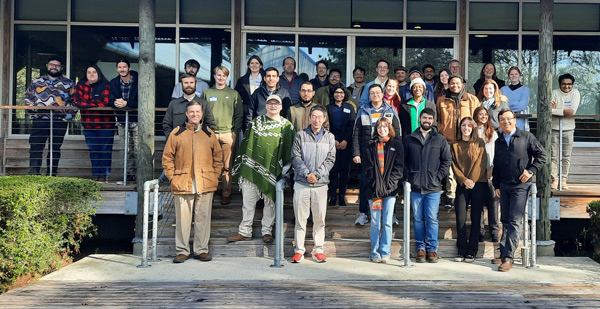
Members of my laboratory and I have addressed this Phragmites dieback problem from five main directions:
-
1) The effects of environmental stressors and Phragmites lineage on plant functional traits, including above and belowground biomass
-
2) The Phragmites metabolome and how it varies among lineages, changes in response to environmental stressors, and is related to plant resistance/tolerance to herbivory and dieback symptoms
3) Phragmites volatile organic compounds (VOCs) and their effect on multi-trophic interactions
-
4) The role of soil microbes in mediating Phragmites-herbivore-natural enemy interactions
-
5) The factors limiting the restoration of Phragmites in areas of dieback
